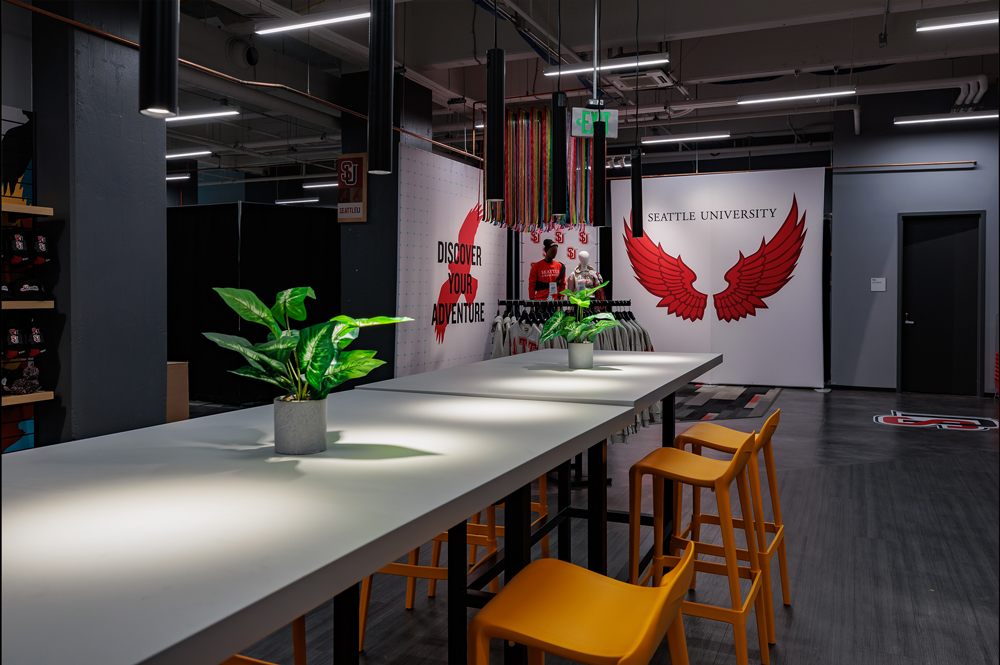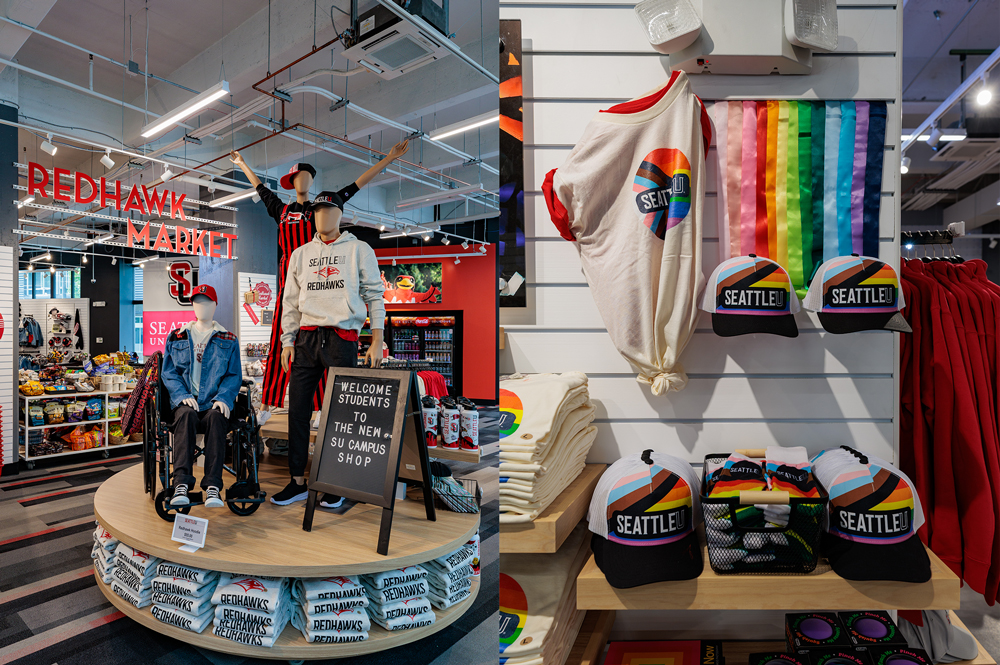Making Over the Campus Store
Written by Kiyomi Kishaba
Friday, November 14, 2025
/0x30:2240x1459/prod01/channel_34/media/seattle-university/news-amp-stories/magazine/fall-2025/Campus_Store_Newstory.jpg)
In addition to what is usually available, reimagined store showcases a range of locally sourced products and alumni-owned brands.
For Michelle Conklin, ’12, the word that comes to mind when she thinks about the Seattle University Campus Store’s glow-up is “vibrancy.” As a graduate of SU’s Master of Divinity program and the director of campus retail services, Conklin has a trained eye for creating spaces that provoke thought. A background in performing arts also plays a part.
“All that background with theology and theater, it’s all moving people through space and setting up unique, meaningful experiences,” Conklin says. “The store has new ideas working together as opposed to rows of things. It reflects excitement, vibrancy and thoughtfulness.”
For many, the Campus Store is their first real interaction with Seattle University. As the northernmost entrance to campus, located on the corner of 12th and Madison, the store’s convenience section draws in locals on their way to work and busying about Capitol Hill, along with high school students looking for a treat or afternoon snack.
The Campus Store revealed its new look in late August, featuring an updated layout, eye-catching displays and a focus on selling unique products. Conklin and other campus partners, including senior leadership and student government, worked with the store’s new vendor, Event Network, to reimagine the shopping experience for the thousands of students and community members who visit each month.

“It’s more about the physical experience of shopping or the brand experience,” Conklin says. “It’s very much about storytelling and less about walking through rows and rows of T-shirts.” Though, rest assured, you can still find your favorite SU-branded clothing and accessories.
The renovation includes refreshed displays that move away from metal bars to white wooden slat walls and box displays crafted from repurposed wood. Banquet tables with charging ports were added in the back of the space to create a third area for studying, working and just connecting with fellow Redhawks.
Previously, Conklin worked as the manager of SU’s Campus Store, bringing to the role prior experience working at stores including at Seattle Pacific University.
She notes that online shopping has changed the items that people look for or expect in a traditional campus store. Most students are looking for products unique to their school and their journey. Undergrads may be interested in the selection of collegiate athletics hoodies and shirts, for example, whereas graduate students might like an SU-branded polo shirt.
The store continues to be the central location for students to pick up course materials, but last year moved to a new vendor, Ecampus, which is a fully online materials provider. Partnered with a physical scanning system from Event Network inside the store, Ecampus provides quick access to materials and offers many rental options.
The reimagined store also emphasizes products sold by Seattle-based companies and products created by Seattle University alums. One of those is Medium’s Collective, a local, BIPOC-owned clothing manufacturer that works with Albers’ RAMP-Up program and is creating a sportswear line for SU. Another alumni vendor is Noir Lux, a BIPOC-owned candle company, selling two scents specific to Seattle University and only available at the Campus Store. The “Seattle U Redhawks” candle features sage, lavender and lemon, a very citrusy scent with calming notes. The “Seattle U” candle features cedarwood and sea salt to capture the aromatic scenery reflective of the lushness of the city and the Pacific Northwest.

“The Campus Store is a place that embodies the life of the whole university,” Conklin says. “Somebody waiting at the Madison bus stop maybe just comes in for a candy bar but happens to see information about one of our graduate programs. It’s a way to extend our voice out to the community.”

/0x37:2240x1452/prod01/channel_34/media/seattle-university/news-amp-stories/magazine/fall-2025/Diego_Newstory.jpg)
/0x93:1744x1194/prod01/channel_34/media/seattle-university/news-amp-stories/images/Be-Legendary-centerpiece-graphic.jpg)
/0x26:1440x935/prod01/channel_34/media/seattle-university/news-amp-stories/images/ROTC-duo-going-over-plans.jpg)